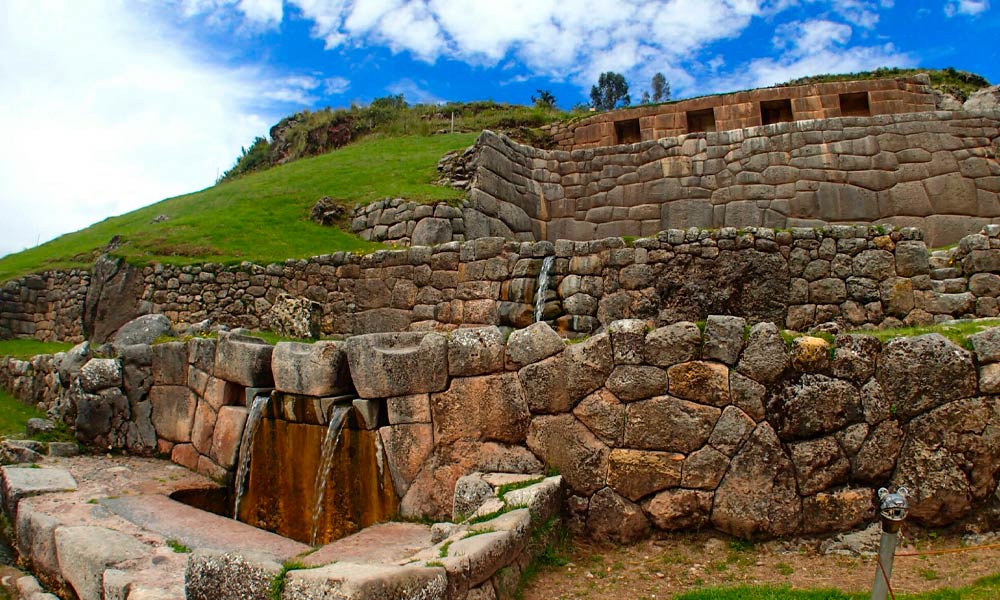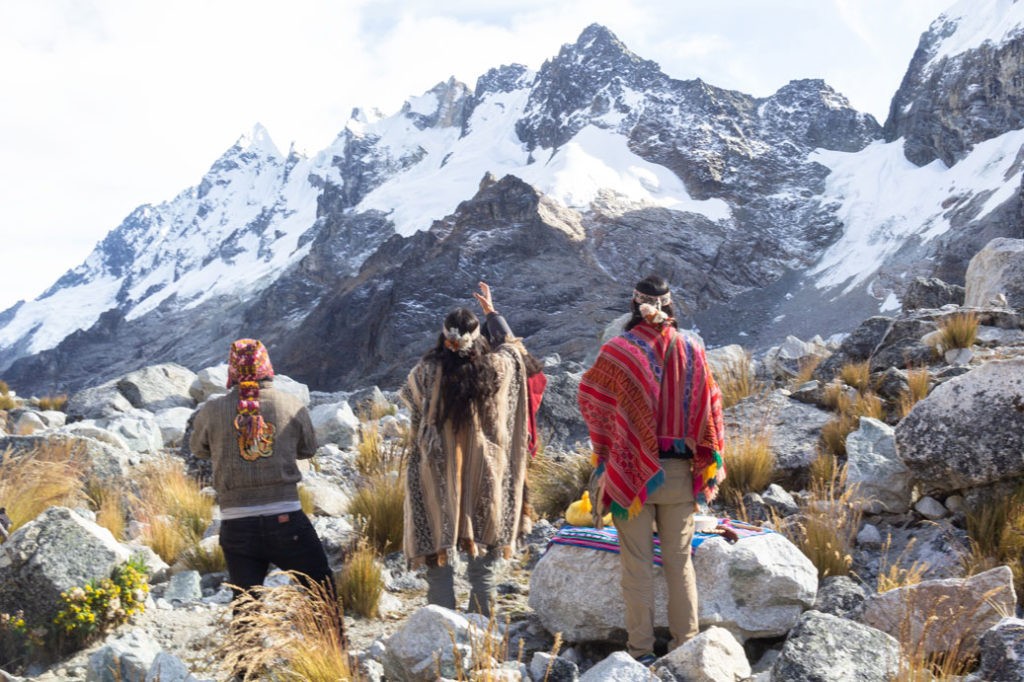Nestled within the sacred valley that surrounds Cusco, the awe-inspiring Sacsayhuamán fortress looms as a testament to the Inca Empire’s grandeur. Located within earshot of Cusco’s historic heart, this monumental fortress exudes an aura of ancient power that remains unyielding despite the passing centuries and the storms of conquest. In this article, we embark on a captivating journey through time, unraveling the rich history, mystical allure, and profound cultural significance that shroud Sacsayhuamán. This extraordinary site remains an enduring treasure, continually captivating and humbling the hearts and minds of all who have the privilege to stand in its formidable shadow.
The Origins of Sacsayhuamán
The name “Sacsayhuamán” carries a profound significance rooted in Quechua culture. Derived from the Quechua word “Saqsaywaman,” it beautifully translates to “satisfied hawk” or “satisfied with beauty.” This name encapsulates the essence of the site, as it is believed that the arrangement of stones at Sacsayhuamán may have been intended to represent a majestic hawk. A hawk, revered for its grace and strength, could symbolize the intricate and harmonious way the massive stones come together, creating an awe-inspiring structure.

Construction of Sacsayhuamán commenced during the 15th century under the visionary leadership of the ninth Inca, Pachacútec Inca Yupanqui. This monumental endeavor was a testament to his ambition and marked the beginning of an architectural masterpiece. The ambitious construction continued through the reigns of subsequent Incas, including Huayna Cápac and Túpac Inca Yupanqui, signifying the immense cultural and historical value that this site holds. Each stone laid was a tribute to Inca engineering and a testament to their unwavering dedication to creating a monument that would withstand the tests of time and the challenges of history.
The Monumental Structure
Sacsayhuamán is truly an architectural marvel that leaves visitors in awe of the Inca’s engineering prowess. Its defining feature is its monumental three-tiered walls, composed of enormous limestone and granite stones. Some of these stones are as long as 300 meters, creating a sight that is both imposing and breathtaking.
What’s truly astonishing is that these massive stones were assembled without the use of mortar, relying entirely on the precision of their craftsmanship. The blocks, some weighing well over 125 tons, are fitted together so flawlessly that even the thinnest of blades cannot penetrate the seams. This level of perfection has sparked endless curiosity and debate about how the Incas achieved such remarkable feats.

The mysteries surrounding the transportation and precise assembly of these colossal stones continue to perplex modern engineers, architects, and archaeologists. Questions persist about the techniques used to move these massive stones from their quarries, the methods of lifting and aligning them so accurately, and the incredible craftsmanship that went into each stone’s shaping. Sacsayhuamán stands as a testament to the Inca’s advanced understanding of construction, geometry, and their deep connection with the Earth and its resources. The site’s enduring enigma reminds us of the extraordinary achievements of a civilization that seemed to defy the limitations of its time.
Fortress or Sanctuary?
The purpose and function of Sacsayhuamán continue to be subjects of lively debate among archaeologists, historians, and researchers. While it’s often referred to as a “fortress” due to its massive defensive walls, there are compelling theories suggesting that its role extended far beyond military defense. Indeed, the layout and design of the structures within Sacsayhuamán, including its huge terraced steps, altars, and intricate zigzagging walls, support the notion that it was a multifaceted complex with significant religious and ceremonial importance.
Sacsayhuamán is believed to have been a spiritual sanctuary where the Inca people gathered for a variety of religious rituals, ceremonies and festivals of Cusco. The unique architecture, including its terraced platforms, seems purposefully designed to accommodate large congregations of people, perhaps for important ceremonial events. This theory aligns with the Inca’s deep reverence for the natural world, and Sacsayhuamán’s location, high above Cusco, allows for awe-inspiring panoramic views of the surrounding landscape, which would have been ideal for ceremonies that honored the Earth and sky.

One of the most famous and revered events held at Sacsayhuamán was the Inti Raymi, an ancient Inca festival celebrating the sun god, Inti. This grand celebration, a central religious ceremony of Inca culture, still lives on through an annual reenactment held every year in Cusco on June 24th. This reenactment draws thousands of visitors from all corners of the globe, allowing them to partake in the revival of this sacred tradition. The Inti Raymi festival at Sacsayhuamán is a living testament to the enduring cultural heritage and spiritual significance of this extraordinary site.
Mysticism at Sacsayhuamán
The mystical allure of Sacsayhuamán extends beyond its historical and archaeological significance. For many, it’s a place of profound spiritual resonance and metaphysical interest. Locals and visitors alike believe that Sacsayhuamán holds a unique and powerful connection to the natural forces and elements that define the Andean worldview. This connection is deeply rooted in the ancient Inca understanding of the relationship between humans and the environment.

As you wander through the awe-inspiring stone structures of Sacsayhuamán, there’s an undeniable sense of mysticism in the air. The very essence of the place seems to vibrate with an energy that transcends time and space. Many visitors report experiencing a palpable sense of peace, harmony, and unity with the environment. It’s common for individuals to find a serene spot amid the ruins for meditation and reflection, tapping into the spiritual vibes that abound in this historic site.
It’s in these moments that one can connect with the profound wisdom of the Inca civilization. The Inca people had a deep understanding of the cosmos, and Sacsayhuamán’s alignment with celestial events, such as the solstices, adds to the site’s metaphysical significance. This spiritual energy continues to be a major draw for modern seekers, from shamans and energy healers to curious travelers who want to tap into the ancient wisdom that remains present within the stones of Sacsayhuamán.
The Legends of Sacsayhuamán
Sacsayhuamán’s enigmatic nature is further heightened by the surrounding myths and legends, one of the most renowned being that of the “Three Thrones of the Gods.” According to local folklore, three massive rocks that grace the summit of the fortress are believed to symbolize the thrones of the gods, each governing a different elemental force – thunder, lightning, and rain.
The legend maintains that these colossal stones possess an otherworldly attribute – they radiate a mysterious glow during electrical storms. The visual spectacle of these stones igniting during tempests has led to a multitude of mystical interpretations. Some believe it’s a divine manifestation, a symbolic communication between the gods and the earth. Others view it as a safeguarding of the ancient Inca wisdom, a phenomenon that underscores the timeless connection between the spiritual world and the material realm.
The phenomenon also carries echoes of Inti Raymi, the Inca Festival of the Sun. As the heavens are illuminated with thunder and lightning during a storm, the glow from these stones could be seen as a reminder of the powerful deities that the Incas revered. It’s a reminder that the spirits of the Inca’s gods and ancestors are deeply intertwined with the Andean landscape, especially in a place as spiritually charged as Sacsayhuamán.
Sacsayhuamán Today
Today, Sacsayhuamán continues to be a major draw for visitors from around the globe. It stands not only as a testament to the remarkable achievements of the Inca civilization but also as a living link to the spiritual and cultural heritage of Peru. The site’s historical and architectural significance, combined with its enigmatic aura, make it a must-visit destination for those seeking to unravel the mysteries of the past.

In recognition of its outstanding universal value, UNESCO granted Sacsayhuamán the prestigious status of a World Heritage Site in 1983. This designation is a testament to its importance in the world’s cultural heritage and ensures that it will be safeguarded and preserved for generations to come. The UNESCO recognition places a responsibility on Peru and the international community to protect and conserve this invaluable piece of history.
As travelers explore the immense stone structures, labyrinthine walls, and intricate terraces of Sacsayhuamán, they become part of a narrative that stretches back centuries. This site allows us to connect with the enduring legacy of the Inca Empire and gain insights into their spiritual and architectural achievements, underscoring how their wisdom and traditions continue to captivate and inspire us in the modern age.
How to Get to Sacsayhuamán
Sacsayhuamán’s proximity to the heart of Cusco adds to its accessibility and appeal. Visitors have the unique opportunity to embark on a historical journey without venturing far from the vibrant energy of the city. As you make your way to the site on foot, you’ll be greeted by breathtaking vistas that extend beyond the horizon. These panoramic views offer a glimpse of the geographical beauty that has long captured the imaginations of travelers.
For those looking for a convenient mode of transportation or wishing to explore Sacsayhuamán as part of a guided tour, taxis and organized excursions are readily available. The local expertise provided by knowledgeable guides can offer deeper insights into the historical, architectural, and spiritual aspects of this remarkable place.
The site is open to the public every day, welcoming curious minds and history enthusiasts alike. It’s worth noting that while Sacsayhuamán is captivating at any time, the experience may differ based on the season and time of day. Sunset visits, for example, provide a magical backdrop as the last rays of sunlight cast enchanting hues over the stone structures and the city below, making it a favorite choice among photographers and romantics.
Sacsayhuamán, with its incredible historical, architectural, and mystical significance, continues to capture the imagination of all who visit. It stands as a testament to the genius of the Inca civilization and serves as a profound connection to ancient Andean culture and spirituality.
Another impressive place is the Short Inca Trail was an integral part of the extensive Inca road system, a network that spanned thousands of miles across the Andes, connecting the far reaches of the Inca Empire. This particular route was often reserved for the elite and played a crucial role in both trade and communication.









